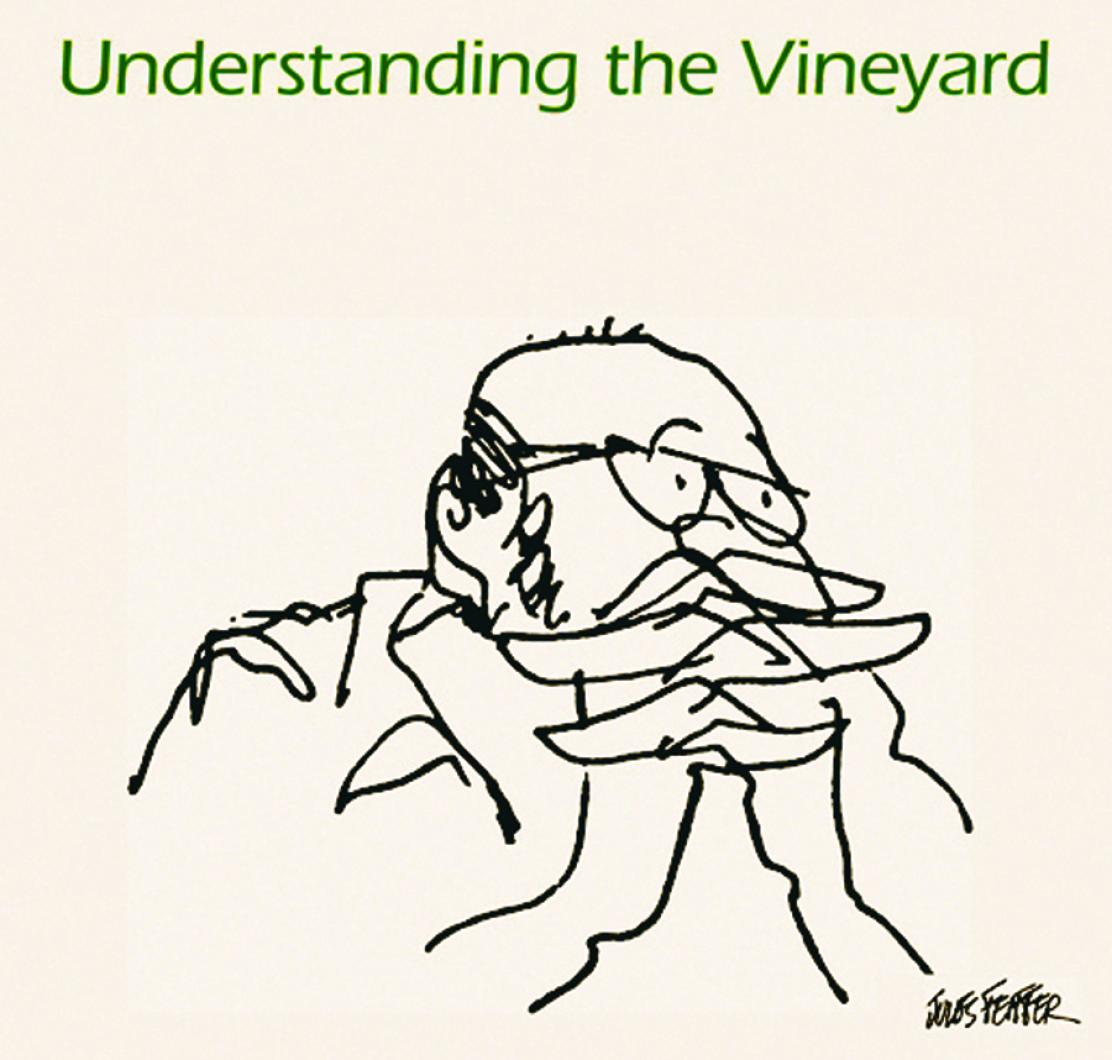All around the Island this summer, at banks, at libraries, at the museum, at the Polly Hill Arboretum, at the offices of nonprofits and realtors, and at Morning Glory Farm, the pensive self-portrait of New Yorker cartoonist Jules Feiffer has been inviting us to understand the Vineyard. What the mysterious booklet asks us to understand is that the unique character, ecosystem and population of the Vineyard is under constant threat from overdevelopment, underemployment and cutbacks.
As the booklet Understanding the Vineyard spells out, without the constant intervention of Island nonprofits, the Vineyard risks losing its “farms, fresh food and fishing boats, ospreys and oysters, widow’s walks and walks in the woods, vistas and Victorians.”
Martha’s Vineyard Donors Collaborative executive director Peter Temple compiled the booklet using information from the Martha’s Vineyard Commission’s Island Plan, and he hopes that it gives even day-trippers to the Island a sense of the behind-the-scenes work required to keep the Vineyard the Vineyard.
“We wanted to help seasonal residents see the big picture of what’s going on here and to see overall what’s needed to sustain the Vineyard,” he said.
“We also wanted to give nonprofits something that they could use to help in their fund-raising and education efforts. We wanted to give them a tool. Some of them mail the booklets to their top donors, some of them give them out at events and others use it to help explain things.”
One of the challenges to see this work was to take all these interesting facts and turn them into something people are really going to read.
To make a compilation of statistics about the creeping, deleterious specter of overdevelopment interesting to a general audience, Mr. Temple enlisted the talents of artists and Islanders such as Mr. Feiffer, Hugh Phear and Martha’s Vineyard Public Charter School teacher and professional cartoonist Paul Karasik to illustrate the guide.
“Some of Paul’s cartoons are just brilliant,” Mr. Temple said. “I didn’t tell him so much what to do, I just said we want to try to get things that convey the spirit of the Vineyard and what it’s about and why people come here and why they love it.”
One of Mr. Karasik’s cartoons features a pair of tourists thumbing through a guide to endangered species trying to identify the local fauna.
“It’s some kind of artist,” one of them says about a landscape painter in the distance.
“We took the NPR or New Yorker approach by adding a little humor to it,” Mr. Temple said. “We wanted people to get a kick out of the cartoons but then to read on.”
And the booklet has its more serious and somewhat disconcerting side as well. As it enumerates in simple and concise prose, 31 per cent of the Vineyard is open to further development; 13 of the 21 Island coastal ponds are already over their limit for nitrogen loading and risk becoming fetid algal dead zones; and only three per cent of the Island remains as farmland at the same time that economic pressures are making such traditional professions untenable.
“There are some big battles to be fought if we are to sustain the Vineyard,” Mr. Temple said. “This is an incredibly successful place and that’s why people want to come and be here. We want them to be aware though there are forces at work that are challenging some of those things that we all love. With state and federal cutbacks, with the pollution in the ponds that is getting worse and worse every year. It is going to take more and more to just to keep the Island even.”
The front lines of those battles will largely take place within the Island’s non profits, which in turn derive their success from the magnanimity of seasonal residents.
“What we’re trying to convey, and I hope people will get, is that so much of the Vineyard’s success is due to this very large group of nonprofits that we have, and the support of our seasonal residents which makes their work possible,” he said. “Not just in past successes but we’ll need it in the future. Ultimately we hope that people will get involved.”







Comments
Comment policy »